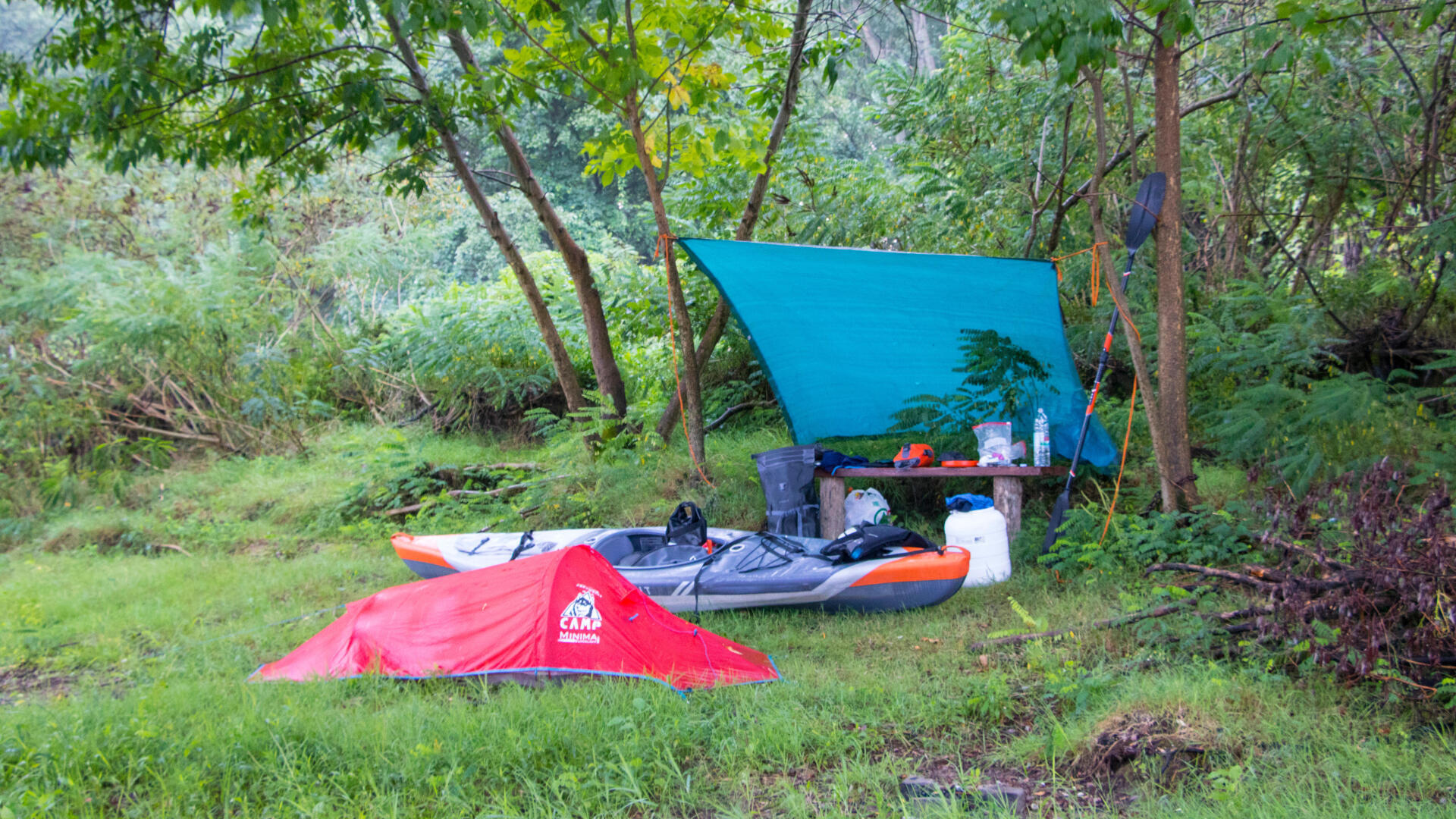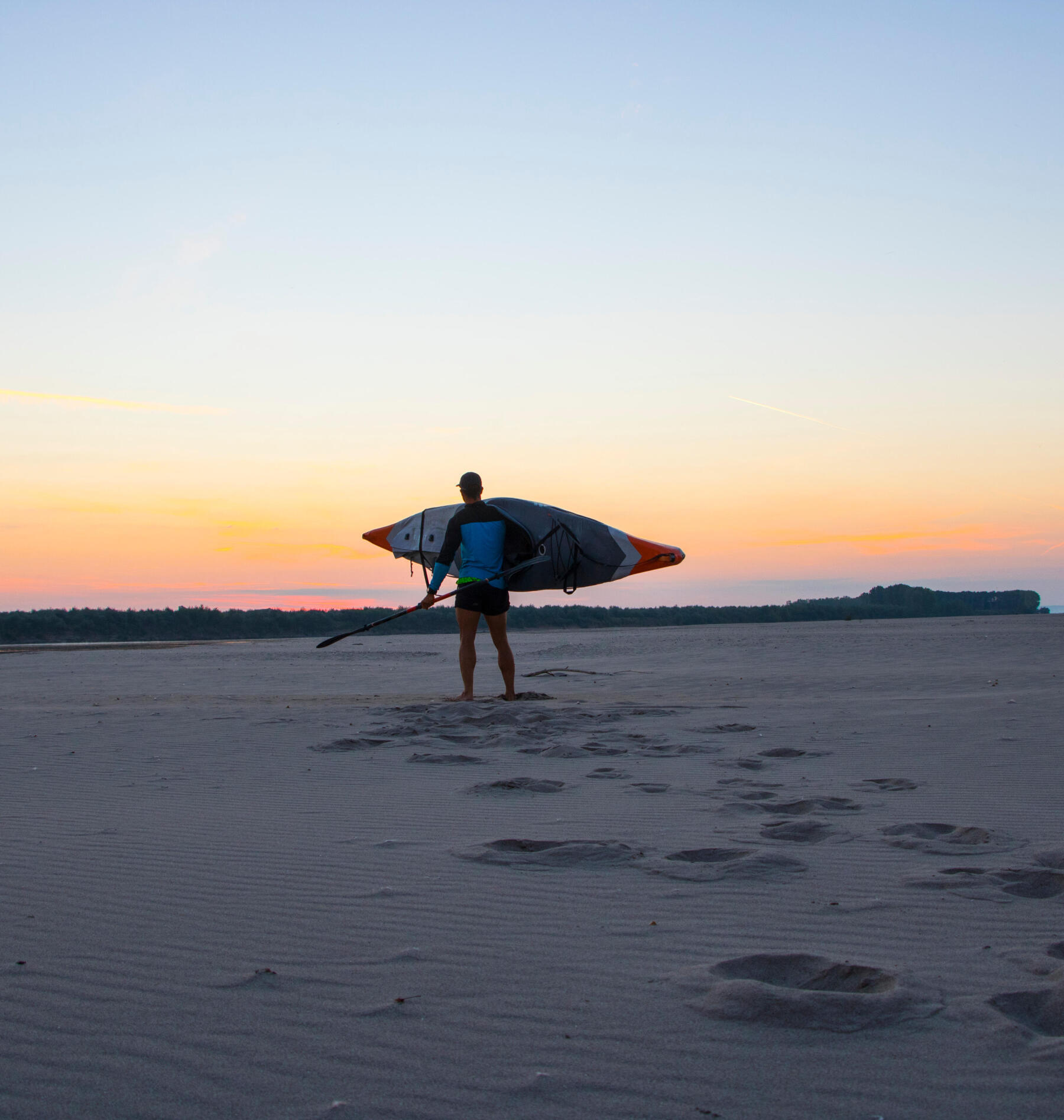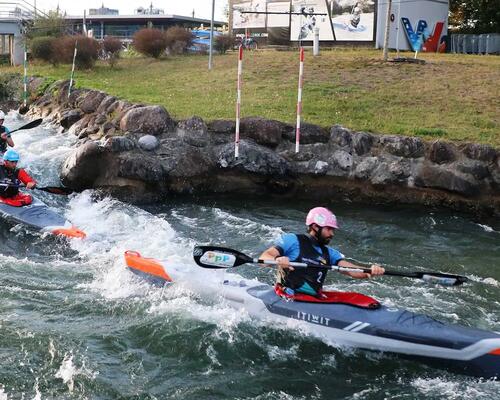#4 - The first days on the danube in germany and austria
Saturday 18 August 2018
At around 10:00am, I inflated and loaded my kayak and set off on the Danube, which is already quite wide at this point.
On the first day, I covered just under 50 kilometres and I went through seven locks. The locks are manual, which is fine if you are part of a group or heavily loaded, but for me, it was easier and quicker to unload my kayak, carry it round the lock and then reload it.I spent the night in my hammock near Lauigen. In Germany andAustria, a lot has been done to make it easier to cross dams and locks.Rails and trolleys are often made available, and obstacles are frequently signposted as you approach them. Later on, there were fewer dams.The Iron Gates 2 dam in Romania is the last one.After that, it’s plain sailing as far as the Black Sea. In the days that followed, I started getting into my routine, waking up at 6am and setting off at 7am, after breakfasting and loading my kit onboard. In the evening, I stopped at about 6pm, slept on the banks of the Danube, usually in the tent, because I damaged my hammock early on in my trip. In Germany and Austria, the banks of the Danube are quite busy, especially with cyclists. But after Vienna, the river becomes much wilder.
Sleeping on the banks of the Danube was not a problem.I pitched the tent or installed my hammock wherever I liked and lit a fire, which was not a problem in most places. After a few days on the river, and after my first blisters had healed, I really got into my routine, and the days passed by, with no two days ever being the same. I crossed the borders.The Danube gradually became wider, but I was not really aware of its size, and I only realised that I was almost home when I stopped to take on some supplies.When Istopped off in villages to do some shopping and looked down from the heights, I saw a Danube that looked totally different and was very impressive.
Only then did I realise how much distance I had covered. And I could hardly complain about the weather.Apart from some rain and a few storms, the sun shone brightly almost every day. But from Serbia onwards, the wind picked up and it was sometimes difficult to make progress.One evening, when I arrived in Galati, the head wind was so strong that I had to stop a few hours early.










